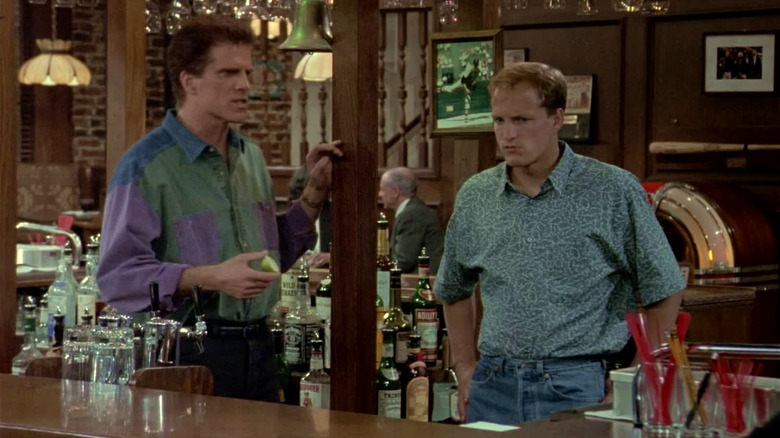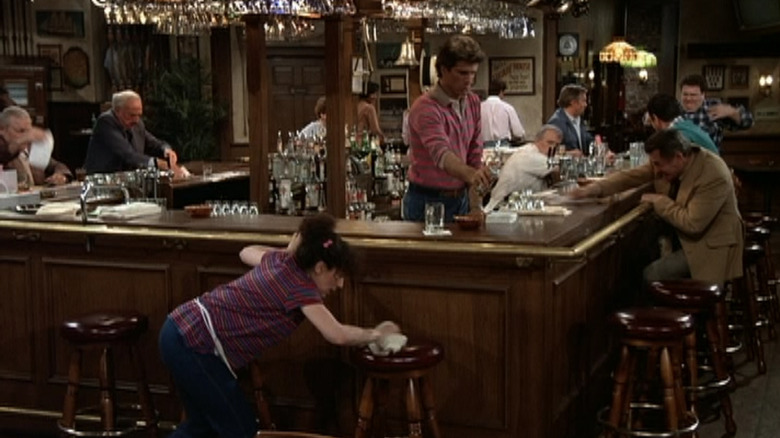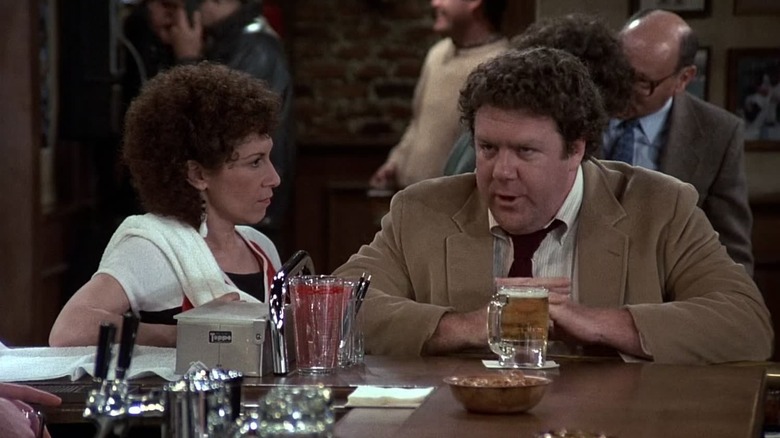The Set Of Cheers Is Based On A Real Boston Bar (And That Caused Some Big Problems)
There is something deeply comfortable about the bar owned by Sam Malone (Ted Danson) on "Cheers," a kind of vintage Americana that can take almost any viewer back to "a place where everybody knows your name," like the theme song says. Its brick walls, wood paneling, and old-school jukebox evoke both its Boston setting and something broader, the kind of place one might expect to find nestled down a random street in any major American city, but it was actually based on a very real bar that the series creators visited while first developing the show! While that sounds like it could really be a great thing for a bar, given how immensely popular "Cheers" was in the 1980s, it actually ended up causing some rather interesting problems, especially for the bar's regulars.
In the book "Cheers: A Cultural History" By Joseph J. Darowski and Kate Darowski, the authors shared the history behind the creation of Cheers (the bar) for "Cheers" (the show) and revealed the interesting fallout that it had for the Boston bar that gave them their set design inspiration. They went through quite a few different concepts trying to figure out the perfect setting for their comedy about a bar, including toying around with the idea of a desert saloon, but when they stepped into a very special bar in Boston one fateful day, it set "Cheers" on the path to greatness.
Cheers is based on the Bull & Finch in Boston
Following the success of the late 1970s sitcom "Taxi," series creators Glen and Les Charles and James Burrows teamed up once more to create a new show, this time in a bar instead of a taxi garage. They moved the setting from New York City to Boston, and in order to try and determine a look for their fictional bar, the Charles brothers went out visiting various bars in the Massachusetts capital. According to Glen Charles, the concierge at their hotel told them to "try the Bull & Finch." The brothers loved the bar so much that they used it as the basis for Cheers, with a few small changes to make it work for a sitcom filmed with a live audience. The bar was so well recreated in the scripts for Cheers that Shelley Long, when auditioning for the role of Diane, told producers that it reminded her of a Boston bar that she knew — that's right, the Bull & Finch. That's pretty accurate storytelling, and it helped cement the series' designs for the fictional bar.
The bar set on "Cheers" became a home away from home not only for viewers who tuned in every week to spend time with the gang but also for the cast and crew, who became like a big extended family. The set and its little mementos meant so much that some of the cast even threatened to quit when repainting destroyed one such keepsake.
The impact on the real Bull & Finch
In their book, the Darowskis shared a story about journalist Georgia Dullea, who interviewed regulars at the Bull & Finch a few years after the premiere of "Cheers" to see how they felt about the show's impact on their neighborhood bar. Unfortunately, they weren't as happy with the tribute as everyone else seemed to be. They longed for a time when they didn't have to deal with out-of-towners while just trying to get a beer. One local college professor even said that in the summer, "They drop them off in tour buses. The place is filled with tourists taking pictures and stealing ashtrays." That had to be pretty frustrating, though not as frustrating as the Bull & Finch converting completely to a Cheers bar, even changing the name to "Cheers."
It's really a shame that the patrons of the Bull & Finch lost their neighborhood bar because of a TV show, but the series helped a whole lot of people feel a little more at home in the world, just like any good bar should. In the end, it all works out.


